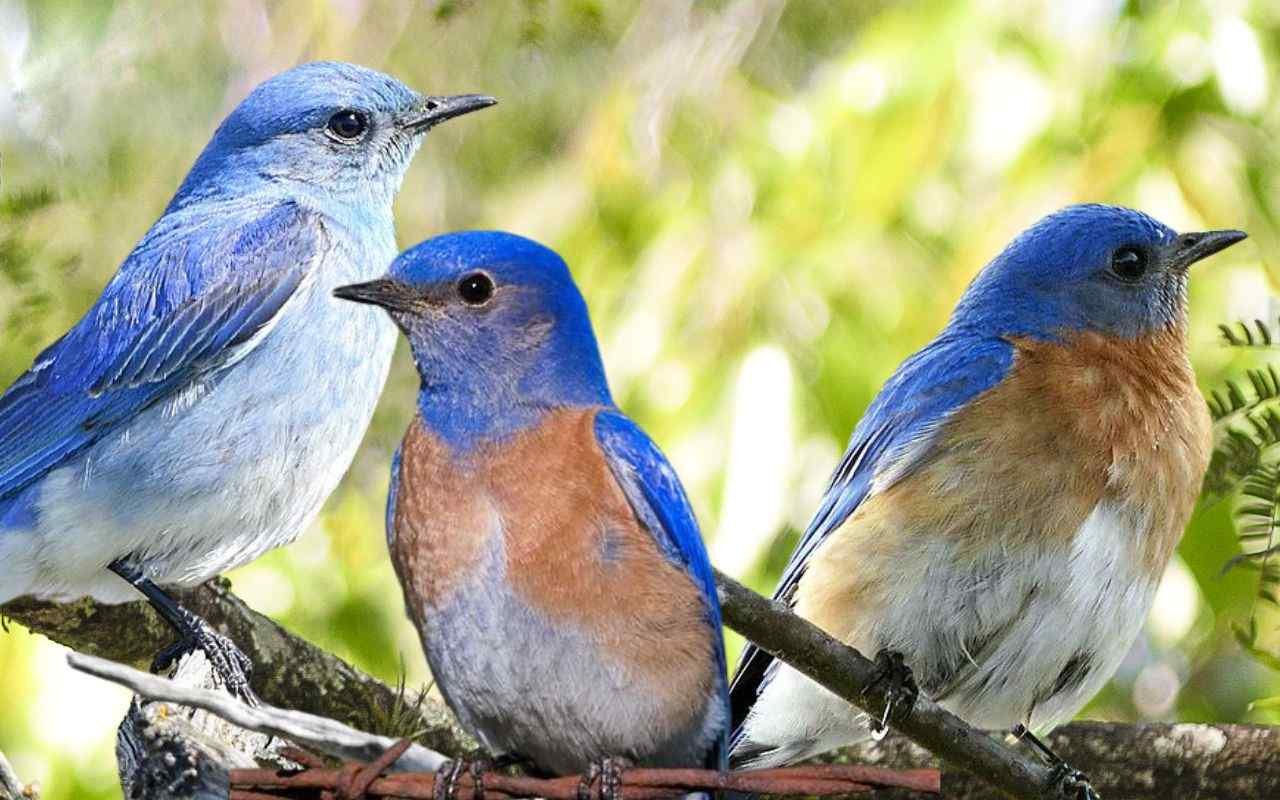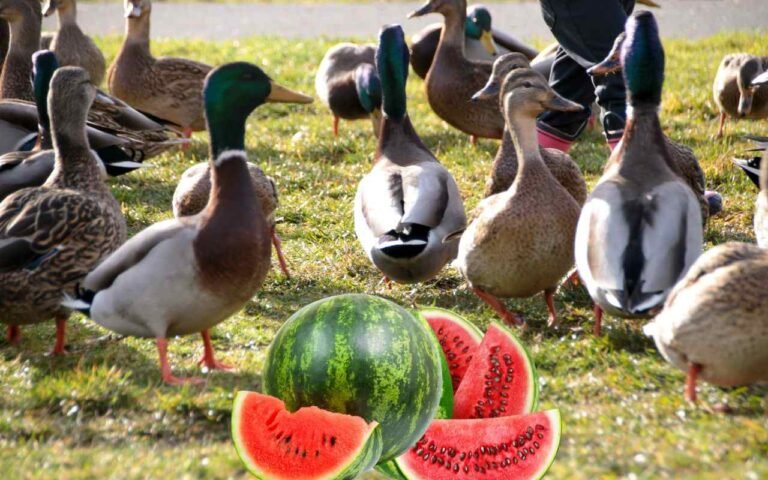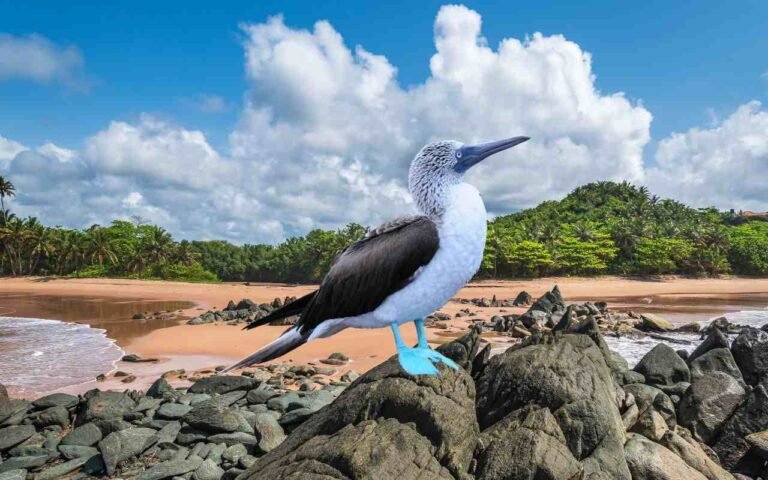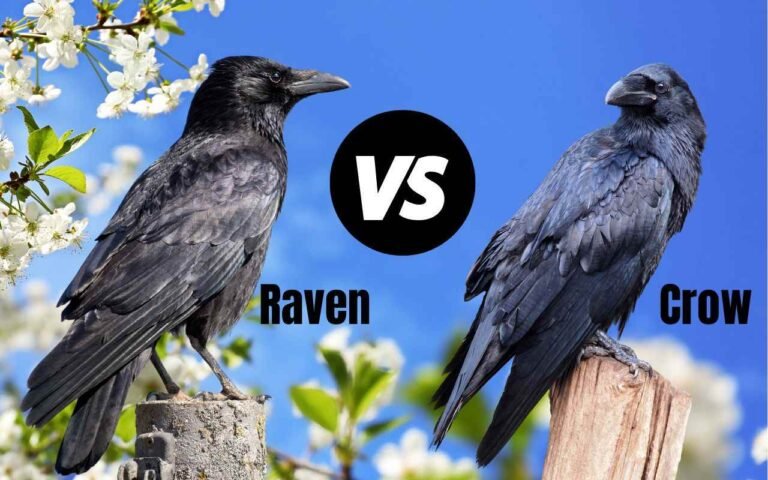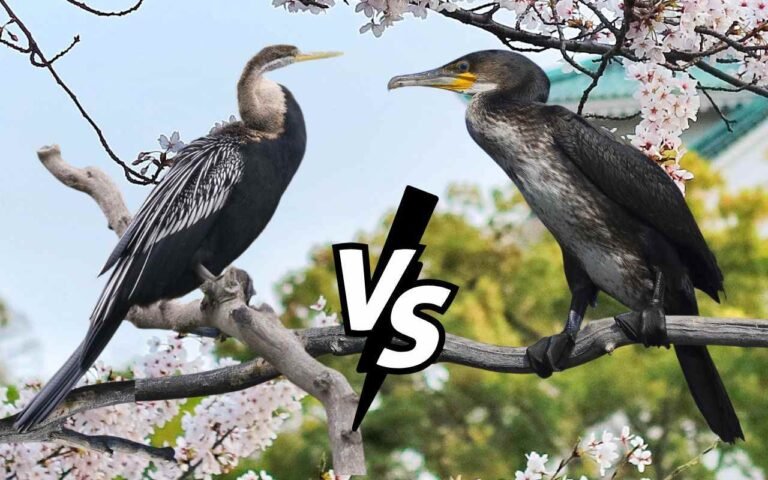Types of Blue Birds: Only These 3 You Really Need to Look At! Most Beautiful Blue Birds in North America
Types of blue birds include a broad spectrum of species with different tones of blue plumage. These avian marvels, which range from the magnificent Blue Jay of North America to the spectacular Indian Roller on the Indian subcontinent, enthrall with their beautiful blue colors. We explore the many remarkable varieties of blue birds in this blog, learning about their habitats, distinguishing characteristics, and intriguing backstories that set them apart from other avian species. Spreading our wings, let’s fly into the beautiful world of blue birds!
Types of Blue Birds
Bluebirds are mainly a group of 3 small thrush species native to North America. These birds get their common name from the brilliant azure, vivid turquoise, and azure blue colors of the males’ plumage.
The 3 species of blue birds are:
- Eastern Bluebird – Sialia sialis
- Western Bluebird – Sialia mexicana
- Mountain Bluebird – Sialia currucoides
Though the three types occupy separate ranges, they share several common traits and characteristics:
- Small-sized songbirds with stocky, rounded bodies
- Short legs and wings adapted for frequent perching
- Cavity nesters that build nests in tree holes or nest boxes
- Insectivorous diets, eating insects like crickets and grasshoppers
- Thrushes in the family Turdidae, related to robins and solitaires
- Brilliantly colored blue plumage in males of all three species
- Mellower blue or gray plumage in females
Bluebirds are widespread and familiar backyard birds cherished for their beautiful colors and a symbol of spring to many. Their populations declined during the 20th century but rebounded thanks to nest box programs.
Eastern Bluebird: A Delightful Songbird
The Eastern Bluebird (Sialia sialis) is a beloved and alluring member of the thrush family. It is distinguished by its gorgeous azure blue plumage and lovely, warbling singing, which is a symbol of spring throughout most of eastern North America. Let’s investigate this charming songbird’s intriguing features, such as its physical traits, nesting practices, and the lovely melody of its song.

Physical Characteristics:
The Eastern Bluebird stands out from other bluebird species because of its vivid hues. The rusty reddish-orange neck and breast stand out sharply against the dazzling azure blue upperparts in males. Conversely, females have a more modest grayish-blue color above and a light color below, along with a recognizable red-brown wash over their faces. Both sexes have elegant blue wings and tails with rufous under-tail feathers.
| Identification: | |
|---|---|
| Characteristics | Description |
| Male Upperparts | Brilliant azure blue |
| Male Throat and Breast | Rusty reddish-orange |
| Female Upperparts | Subdued grayish-blue |
| Female Below | Pale |
| Both Sexes Face | Distinctive red-brown wash |
| Wings and Tail | Blue with rufous undertail feathers |
| Range: | |
| Location | Description |
| Found | East of the Rocky Mountains from southeastern Canada to Mexico |
| Most Abundant | In the eastern United States |
| Habitat | Occupies open country like pastures, meadows, and golf courses |
| Diet: | |
| Diet | Description |
| Primary Food | Insects like crickets, grasshoppers, and beetles |
| Additional Food | Spiders, snails, berries, and seeds |
| Foraging Behavior | Scan from low perches |
Nesting Habits:
Eastern Bluebirds are cavity nesters, and their favorite nesting locations are holes in trees, fence posts, or manufactured nest boxes. The eggs and chicks in these tiny songbirds’ nests, compact cups made of grasses and pine needles, are kept warm and safe. The following are the nesting behaviors of eastern bluebirds:
| Nesting Habits | Details |
|---|---|
| Nesting Sites | Trees, fence posts, or nest boxes |
| Nest Structure | Compact cup-shaped nests made of grasses and pine needles |
| Broods per Spring | May have 2-3 broods per spring |
Eggs and Incubation:
Eastern Bluebird eggs are a sight, typically pale blue or sometimes white, with a few tiny speckles. The female Bluebird incubates the eggs for 12 to 14 days. She actively tends to her eggs during this time, ensuring they get the warmth and attention they need for a successful hatch.
Song and vocal performances:
One of the Eastern Bluebird’s most charming traits is its melodic singing. Rich warbles, trills, and chirps, among other musical notes, are used by the male Bluebird to serenade the surroundings. Bluebirds use this appealing song to communicate with one another, mark territory, and attract mates. All who hear their music are delighted since it is a natural symphony.
Conservation and Nest Box Programs:
Due to habitat degradation and competition with other bird species for breeding grounds, the Eastern Bluebird has struggled. However, implementing nest box programs has significantly contributed to maintaining their population. These efforts entail putting artificial nest boxes in appropriate settings to provide Eastern Bluebirds more opportunities to nest. These birds have discovered a secure habitat to rear their young, aiding their protection.
Appreciating the Eastern Bluebird’s Presence:
Attracting Eastern Bluebirds to one’s garden may be a pleasant experience for birdwatchers and nature lovers. The careful placement of nest boxes and the provision of an appropriate environment will entice these colorful songbirds to stop by and perhaps lay their eggs nearby. These insectivorous beauties may be further attracted by a bird feeder filled with berries and seeds, letting them enjoy a varied diet and creating a pleasing spectacle for observers.
To summarize, the Eastern Bluebird is a genuine treasure among the bluebird species, mesmerizing us with its azure blue plumage, alluring singing, and endearing nesting practices. By studying and enjoying these beautiful songbirds, we can better promote their conservation and guarantee that future generations may continue to enjoy their presence and enchanting tunes in the vast outdoors.
The Western Bluebird: A Jewel of Western North America
Sialia mexicana, a beautifully colorful thrush that adorns the sky of western North America, is known as the Western Bluebird. The male Western Bluebird is stunning with its deep, dazzling azure blue upperparts and reddish-rust colored neck and breast. More delicately colored females have a grayer blue tint above and a mild gray-blue color below. Both sexes have a distinctive reddish-brown wash over their features, which adds to their allure.

Characteristics
| Identification: | |
|---|---|
| Characteristics | Description |
| Male Upperparts | Deep brilliant turquoise blue |
| Male Throat and Breast | Reddish-rust colored |
| Female Upperparts | Grayer blue above |
| Female Below | Pale gray-blue |
| Range: | |
| Distribution | Description |
| Geographic Range | West of the Rocky Mountains from Canada to Mexico |
| Abundance | Most abundant along the Pacific Coast and Southwest |
| Habitat: | |
| Habitat Preferences | Description |
| Preferred Habitats | Open habitats such as meadows, pastures, and logged forests |
| Nesting: | |
| Nesting Behavior | Description |
| Nesting Sites | Cavities in trees, posts, or nest boxes |
| Nest Structure | Compact nests made of grasses, stems, and pine needles |
| Broods per Spring | May raise 2-3 broods per spring |
| Diet: | |
| Dietary Habits | Description |
| Primary Diet | Insects like grasshoppers, crickets, beetles, and ants |
| Supplementary Diet | Berries and seeds, especially in winter |
| Foraging Behavior | Forages for insects while perching on low branches |
Conservation:
Despite historical losses in Western Bluebird numbers brought largely by habitat degradation, nest box initiatives have greatly aided their regrowth. These programs have offered secure nesting locations, improving their mating process’s success.
To summarize, one of the most alluring bluebird species to be found in western North America is, without a doubt, the Western Bluebird. It is a cherished inhabitant of the area because of its brilliant colors, charming melodies, and interesting nesting behaviors. We ensure that future generations may savor the beauty and wonder of the Western Bluebird by continuing to value and safeguard these lovely birds and their natural habitats.
Mountain Bluebird (Sialia currucoides)
The Mountain Bluebird is an alluring thrush that has evolved to live in the beautiful mountain settings of western North America. Here are some significant facts regarding this extraordinary Bluebird:

Characteristics
| Identification: | |
|---|---|
| Characteristics | Description |
| Male Wings and Tail | Brilliant turquoise blue |
| Male Throat and Breast | Pale blue throat, gray breast |
| Female Appearance | Grayer overall with duller blue wings and tail |
| Range: | |
| Distribution | Description |
| Geographic Range | Found in mountainous regions of western North America |
| Elevational Range | Nests in crevices and cavities at elevations up to 12,000 ft. |
| Winter Range | Migrates to lower altitudes and as far south as Mexico |
| Nesting: | |
| Nesting Behavior | Description |
| Nesting Sites | Cavities in trees, rock crevices, or nest boxes |
| Nest Structure | Nests made of twigs, grasses, and soft materials |
| Broods per Summer | May raise up to 3 broods per summer |
| Diet: | |
| Dietary Habits | Description |
| Primary Diet | Feeds predominantly on insects like grasshoppers, crickets, ants, and beetles |
| Supplementary Diet | Consumes seeds and berries, especially during winter |
| Foraging Behavior | Drops down from perches to catch insects on the forest floor |
Conservation:
The mountain Bluebird’s blue wings and tail symbolize its clean alpine habitat. Its habitats and breeding grounds must be protected to preserve this lovely species.
These birds manage bug populations, pollinate, and disperse seeds, benefiting the ecology. Their presence improves mountain habitats.
Nest box initiatives and habitat protection have stabilized Mountain Bluebird numbers. We preserve our natural legacy and guarantee future generations may enjoy these unique bluebirds by appreciating and protecting these high-altitude specialists.
To summarize, the Mountain Bluebird is a prized addition to the biodiversity of western highland areas because of its alluring look and habits. All who have the opportunity to watch these birds’ beautiful flight and musical songs are filled with amazement and wonder as the sun highlights their vivid blue feathers against the background of untamed landscapes. As we work to safeguard the complex tapestry of life in our world, we share responsibility for protecting their homes and the sensitive ecosystems they call home.
Other Bluebird Species
Numerous beautiful bluebird species adorn the sky of North America, in addition to the Eastern Bluebird, Western Bluebird, and Mountain Bluebird. Let’s investigate these lovely birds and their distinctive traits:
Indigo Bunting (Passerina cyanea)
| Indigo Bunting (Passerina cyanea) | Details |
|---|---|
| Identification | The female Indigo Bunting is more modest with brownish coloration compared to the male, who has striking, deep blue plumage. |
| Range | During the mating season, it is widespread over eastern and central North America. Some individuals move to southern Mexico and Central America during the winter. |
| Nesting | Indigo Buntings create cup-shaped nests from of grass and leaves, which are often well-hidden under bushes or other thick vegetation. |
| Diet | Berries, insects, and seeds make up the majority of their food. |
Lazuli Bunting (Passerina amoena)
| Lazuli Bunting (Passerina amoena) | Details |
|---|---|
| Identification | The female Lazuli Bunting has a more subdued brownish look, in contrast to the male's vivid blue head, back, and tail. |
| Range | They move to Mexico and Central America for the winter after reproducing in western North America. |
| Nesting | Lazuli Buntings build cup-shaped nests from of grass and leaves, usually in low-hanging plants. |
| Diet | They mostly eat seeds, insects, and tiny fruits in their diet. |
Blue Grosbeak (Passerina caerulea)
| Blue Grosbeak (Passerina caerulea) | Details |
|---|---|
| Identification | The female Blue Grosbeak has brownish and blue-gray coloring, while the male has vivid blue on his head, back, and tail. |
| Range | During the mating season, they may be found in the southern United States and certain regions of Mexico; in the winter, they migrate to Central America and northern South America. |
| Nesting | Blue Grosbeaks construct cup-shaped nests from of grass and leaves in thick undergrowth or among bushes. |
| Diet | They consume fruits, seeds, insects, and other omnivorous foods in their diet. |
Tree Swallow (Tachycineta bicolor)
| Tree Swallow (Tachycineta bicolor) | Details |
|---|---|
| Identification | Tree swallows have glossy blue-green upperparts and white underparts in both the male and female species. |
| Range | Throughout North America, nesting either in man-made nest boxes or in the natural crevices of trees. |
| Nesting | Tree swallows build cup-shaped nests lined with feathers that are made of grass. |
| Diet | They mostly eat flying insects that they capture while flying. |
Blue Jay (Cyanocitta cristata)
| Blue Jay (Cyanocitta cristata) | Details |
|---|---|
| Identification | Blue Jays have striking crests on their heads and vibrant blue and white coloring. |
| Range | Found all across eastern and central North America, often seen in parks and backyards. |
| Nesting | Large nests are constructed by Blue Jays utilizing twigs and bark, often in trees or bushes. |
| Diet | Insects, nuts, seeds, and sometimes tiny vertebrates or eggs, make up their food. |
Belted Kingfisher (Megaceryle alcyon)
| Belted Kingfisher (Megaceryle alcyon) | Details |
|---|---|
| Identification | Belted Kingfishers have blue-gray plumage with a noticeable blue "belt" across the breast on both the male and female. |
| Range | found all across North America next to freshwater sources of water, such as ponds, lakes, and rivers. |
| Nesting | Belted Kingfishers dig tunnels for nesting on earthen banks, often close to water sources. |
| Diet | Fish make up the majority of their nutrition, and they capture it by diving into the water from perches. |
These bluebird species enrich North America’s rich variety of avian life. They enhance our natural surroundings and astound birdwatchers and nature lovers with their vivid colors, melodic songs, and unique habits. As we begin to recognize the significance and beauty of these extraordinary birds, it becomes more crucial than ever to support conservation efforts to protect their habitats and guarantee their survival for future generations.
Bluebird Food and Habitat
The attractive bluebirds are prized for their beautiful plumage and sweet cries. Promoting their protection and developing conditions ideal for these lovely birds requires understanding their habitat and food habits.
Where do bluebirds live?
Native to North America, bluebirds may be found in various settings. Each of the three primary bluebird species—Eastern, Western, and Mountain—has its own range and preferences.
Eastern Bluebird (Sialia sialis):
- Eastern US states have the highest density of Eastern Bluebirds.
- They live in open spaces like meadows, pastures, and golf courses.
- Eastern Bluebirds may also be found East of the Rocky Mountains, from southern Canada to Mexico.
Western Bluebird (Sialia mexicana):
- Western Bluebirds live west of the Rockies from Canada to Mexico.
- They are particularly prevalent in the Southwest and along the Pacific Coast.
- Western bluebirds prefer the open environments of meadows, pastures, and logged woods.
Mountain Bluebird (Sialia currucoides):
- Mountainous areas of western North America are home to mountainous bluebird species.
- Nests are built in cracks and fissures up to 12,000 feet up.
- Mountain Bluebirds go southward, all the way to Mexico, during the winter months.
What do bluebirds eat?
Bluebirds are insectivorous animals that consume various foods according to the time of year and what is readily available. Insects, berries, and seeds are among their food sources.
Insects: Crickets, grasshoppers, beetles, ants, and spiders are among the insects that bluebirds typically consume as food. Environments abundant in insects are essential for their survival, particularly during the breeding season when they must feed their young a diet high in protein.
Berries and Seeds: Bluebirds rely on berries and seeds for food during winter or when insect numbers are low. To augment their nutrition, they eat fruits, including elderberries, blueberries, and juniper berries.
By offering appropriate nesting locations, plenty of food sources, and a clean water source, you can attract bluebirds to your backyard or neighborhood. Building bluebird-specific nest boxes and combining live mealworms, suet, and berry-producing plants will entice these magnificent songbirds to visit and even lay their eggs nearby.
Bluebird Preservation
In the wild, bluebirds encounter several difficulties, such as habitat degradation, competition for nesting places, and chemical exposure. The future survival of these adorable birds depends on conservation initiatives.
Some significant programs to aid bluebird conservation include:
Programs for installing nest boxes help compensate for the loss of natural nesting cavities brought on by urbanization by offering bluebirds safe and secure places to build their nests.
Preservation of Habitat: To provide bluebirds access to sufficient feeding opportunities and nesting grounds, protecting and restoring their natural habitats, such as grasslands and open forests, is crucial.
Reduce Pesticide Use: By using fewer pesticides in bluebird habitats, you may lessen the harm these substances do to their health and the health of the insects they eat.
Public Awareness and Education: By making people aware of bluebirds’ demands for conservation, we may encourage a sense of admiration and support for their preservation.
How to Get Bluebirds in Your Yard?
You may enjoy the pleasure of up-close viewing these endearing songbirds if you successfully lure bluebirds into your yard. Follow these crucial actions to establish a hospitable habitat for bluebirds:
Providing Suitable Habitat and Food
| Providing Suitable Habitat and Food | Description |
|---|---|
| Open Space | Bluebirds like open spaces with short grass, such pastures, golf courses, or meadows. |
| Perches | Install bird feeders or tiny branches next to the nest boxes so that bluebirds have somewhere to perch. |
| Food | Serve a variety of foods, such as berries, suet, and live mealworms. |
Choosing the Right Bluebird House
| Choosing the Right Bluebird House | Description |
|---|---|
| Design | To accommodate their nesting needs, bluebird homes should have a certain layout. |
| Material | Wooden or sturdy plastic houses are preferable. Wood has a more natural feel and greater insulation. |
| Predator Guards | To shield the nest from predators, think about including a predator guard or baffle. |
Placement of Bluebird Houses
| Placement of Bluebird Houses | Description |
|---|---|
| Orientation | To make access and escape as simple as possible, point the bluebird house's entrance in the direction of a wide space. |
| Height | Mount the home 4 to 6 feet above the ground on a strong pole or post. |
| Distance | To accommodate territorial behavior, place many bluebird homes at least 100 yards away from one another. |
| Avoidance | To protect bluebirds from possible dangers, keep the bluebird home away from bird feeders and bird baths. |
Maintenance and Monitoring
| Maintenance and Monitoring | Description |
|---|---|
| Cleaning | In order to avoid a parasite infestation, clean the bluebird home often between breeding seasons. |
| Monitoring | To prevent interrupting the nesting process and to look for problems, keep a distance from the bluebird home and observe it. |
You may make your yard a welcoming place for bluebirds by following these instructions and providing an appropriate habitat, nesting locations, and food. The bluebird home will be monitored and maintained to guarantee the continuous existence of these beautiful songbirds and support efforts to conserve them. Please take pleasure in luring bluebirds to your yard and enjoying their stunning beauty up close!
Value to Ecosystems
Bluebirds are important to the culture and are crucial in preserving natural harmony. The following are some ways that bluebirds improve ecosystems and human landscapes:
| Insect Control | Prey on harmful insect pests | Help suppress grasshoppers, cutworms, caterpillars | One clutch of nestlings can eat up to 500 insects/day! |
| Native Plant Protection | Consume berry and seed eating insects | Reduce damage to beneficial native plants | Help disperse seeds through droppings |
| Pollination | Feed on bees, wasps, and other pollinators | Carry pollen between plants on feathers | Boost pollination of gardens and wild plants |
| Indicator Species | Sensitive to habitat and climate changes | Declines can signal broader ecosystem issues | Population trends used to monitor conservation impacts |
| Cultural Value | Beloved songbirds celebrated in art and literature | Symbolize springtime renewal and hope | Inspire conservation ethic in communities |
Bluebirds are essential for ecological balance and culture. They protect crops and natural plants by eating pests and dispersing seeds. Their unintentional pollination boosts garden and wild plant biodiversity. Bluebirds indicate ecosystem health and conservation implications. Songbirds represent regeneration and optimism in art and literature, motivating conservation initiatives. Bluebirds enhance our ecosystems and history; therefore, we must protect them for future generations.
Conclusion
Bluebirds are not just beautiful birds but also essential members of our ecosystems. The preservation of both biodiversity and ecological balance depends on their protection. Their presence in our lives inspires astonishment and excitement since they are widely recognized as symbols of joy and hope. By encouraging bluebirds, we may preserve these charming songbirds for future generations. Let’s continue to value and safeguard bluebirds and embrace their symbolic meaning as a reminder of the wonder and fragility of nature. By working together, we can ensure a better future for bluebirds and the habitat they call home.
Frequently Asked Questions
What types of bluebirds are there?
North America has three main bluebird species: Eastern, Western, and Mountain. Their distinct geographic areas and variations in plumage color allow for identification.
Where do bluebirds live?
The Eastern and Western Bluebirds have distinct ranges in eastern and western North America. Mountainous western regions all year long are home to Mountain Bluebirds. Each of the three nests is in open forest areas and caves.
Why are bluebirds blue?
Brilliant azure, turquoise, and cobalt blue feathers on the males of bluebirds are used to entice females. The blue-gray coloring is more muted in females. Instead of pigment, the feathers’ structural coloring gives them their blue color.
What do bluebirds eat?
Bluebirds typically eat insects, including grasshoppers, crickets, and beetles, since they are insectivorous. They add seeds, berries, and spiders to their diet depending on the time of year and what is available.
How do I attract bluebirds to my yard?
Bluebird recruitment may be aided by providing nest boxes and reducing pesticide usage. They also need access to berries, insects, and clean water supplies. Bluebird habitat is best described as open, grassy regions scattered with perches.
Why are bluebird populations declining?
Bluebird losses have been attributed to habitat loss, pesticide usage lowering insects, invading species, and climate change. In many regions, population recovery has been aided by conservation measures like nest boxes.
- Florida Turkey Season 2025-2026: Latest Hunting Dates, Licenses & Rules Available! - October 16, 2025
- Delaware Turkey Season 2025-2026: [Everything You Need to Know Dates, Regulations, Bags & More] - October 16, 2025
- Connecticut Turkey Season 2025-2026: [Dates, Regulations, Bag Limits & More] - October 16, 2025
